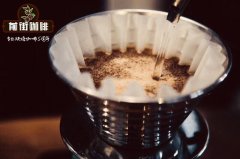Ethiopian ethiopia Coffee Bean heirloom Family Treasure Local Coffee varieties

Professional coffee knowledge exchange more coffee bean information please follow the coffee workshop (Wechat official account cafe_style)
Front Street-introduction to Heirloom Coffee
Regular Ethiopian coffee drinkers should have heard of the original species [Heirloom]. Most Ethiopian varieties are named after this name, in fact, because there are too many Ethiopian varieties. It is like the natural gene bank of Arabica. On the one hand, there are many varieties, and it is difficult to identify and classify them. On the other hand, the Ethiopian government is reluctant to disclose the information of these varieties for protection reasons. So it is collectively called [Heirloom native species].
The Conga Cooperative (Konga Coop) is one of 26 cooperatives under the Yega Coffee Farmers' Cooperative Union (The Yirgacheffe Coffee Farmers Cooperatives Union, YCFCU). Established in 1994, Konga was used as the name of the co-operative because of its proximity to the Konga River Basin. The Konga Cooperative covers 1556 families of small coffee farmers, all of whom cultivate an average area of less than 1.25ha at an altitude of about 1800 to 2000 meters. Coffee varieties are mainly a mixture of Typica and local native species (Heirloom).
What makes Konga special is the red soil where coffee beans are grown (I can't help remembering the recent article about Pomei Hou, which is also red soil). Laterite is rich in high-speed iron, and the thickness of laterite is 1.5m. Deep soil is rich in nutrients, and high iron content is also good for coffee beans, because iron is a micronutrient that helps plants produce chlorophyll, which is very helpful for photosynthesis, allowing plants to absorb more energy and produce better fruits.
There is no doubt that red soil is one of the keys to the production of delicious coffee beans by Kongjia Cooperative.
The Kongjia cooperative improved the traditional sun treatment technology. Before the coffee cherry was exposed to the sun, it manually removed the immature green fruits or defective beans and abandoned the traditional ground exposure method, and used a high-cost elevated net bed to avoid absorbing the peculiar smell and miscellaneous smell on the ground in the process of sunlight. pick out moldy or damaged coffee fruits for the second time during the sun drying Two weeks later, after the pectin and sweetness in the coffee cherries are fully absorbed by the coffee beans, the coffee beans are removed by machine, and finally the defective beans are manually removed. Layers of checks can create the smooth and clean / elegant flower and fruit aroma of Sun Yega Chevy / silky red wine texture and charming chocolate finish.
Knowledge: Elaraby plus seed and Robasta seed are divided into individual coffee and Italian coffee according to the matching of coffee beans.
In short: Qianjie is a coffee research hall, happy to share the knowledge about coffee with you, we share unreservedly just to make more friends fall in love with coffee, and there will be three low-discount coffee activities every month. The reason is that Qianjie wants to make more friends drink the best coffee at the lowest price, which has been Qianjie's tenet for 6 years!
END
Important Notice :
前街咖啡 FrontStreet Coffee has moved to new addredd:
FrontStreet Coffee Address: 315,Donghua East Road,GuangZhou
Tel:020 38364473
- Prev

Coffee native species What does it mean? Ye Jia Xue Fei heirloom is a confidential work of local coffee varieties
Professional coffee knowledge exchange More coffee bean information Please pay attention to coffee workshop (Weixin Official Accounts cafe_style) Front Street-Heirloom Coffee Introduction There are hundreds of coffee species existing on the earth before, only Arabica species are close to 100 species, but when it comes to fine coffee, only Arabica beans may be called fine coffee, but not all Arabica.
- Next

Coffee beans origin and variety introduction Yega Shefi heirloom coffee bean gene bank general term
Professional coffee knowledge exchange More coffee bean information Please pay attention to coffee workshop (Weixin Official Accounts cafe_style) Front Street-coffee variety introduction We usually buy coffee often hear what Tibika, Bourbon, Kent, SL28, SL34 and so on. Here we will introduce where they come from, the origin of their names and varieties, and their agricultural and flavor characteristics. This is not a product.
Related
- Beginners will see the "Coffee pull flower" guide!
- What is the difference between ice blog purified milk and ordinary milk coffee?
- Why is the Philippines the largest producer of crops in Liberia?
- For coffee extraction, should the fine powder be retained?
- How does extracted espresso fill pressed powder? How much strength does it take to press the powder?
- How to make jasmine cold extract coffee? Is the jasmine + latte good?
- Will this little toy really make the coffee taste better? How does Lily Drip affect coffee extraction?
- Will the action of slapping the filter cup also affect coffee extraction?
- What's the difference between powder-to-water ratio and powder-to-liquid ratio?
- What is the Ethiopian local species? What does it have to do with Heirloom native species?

